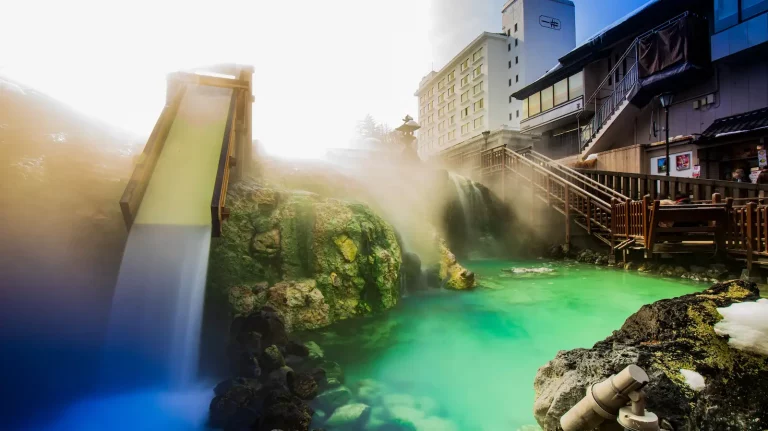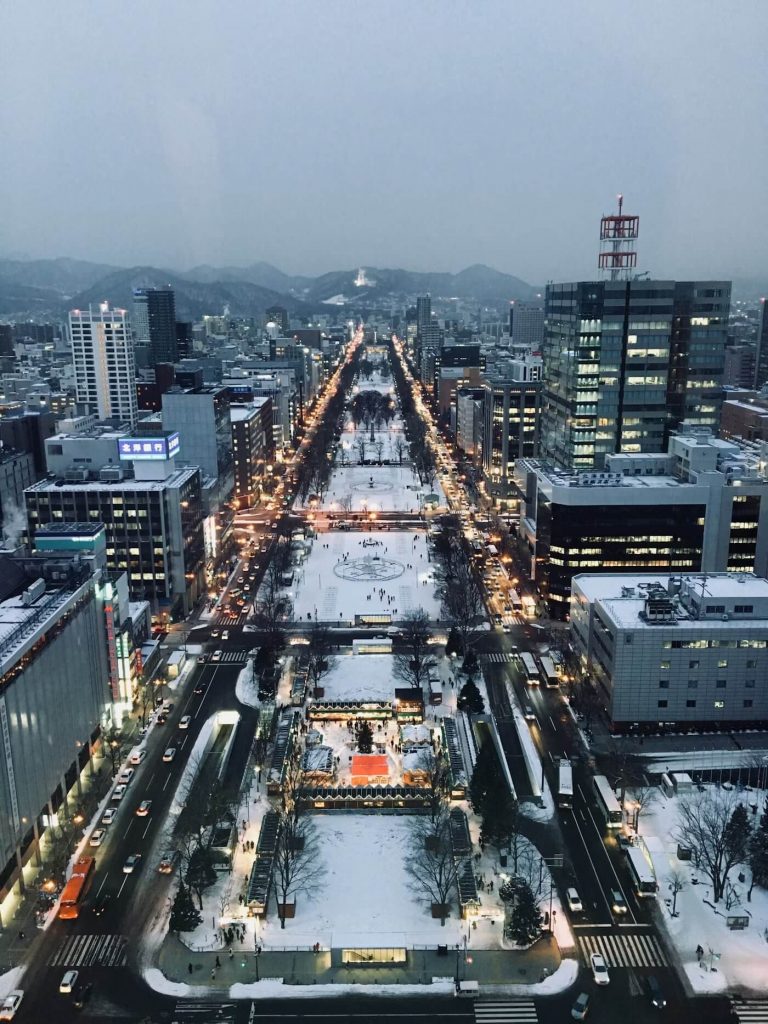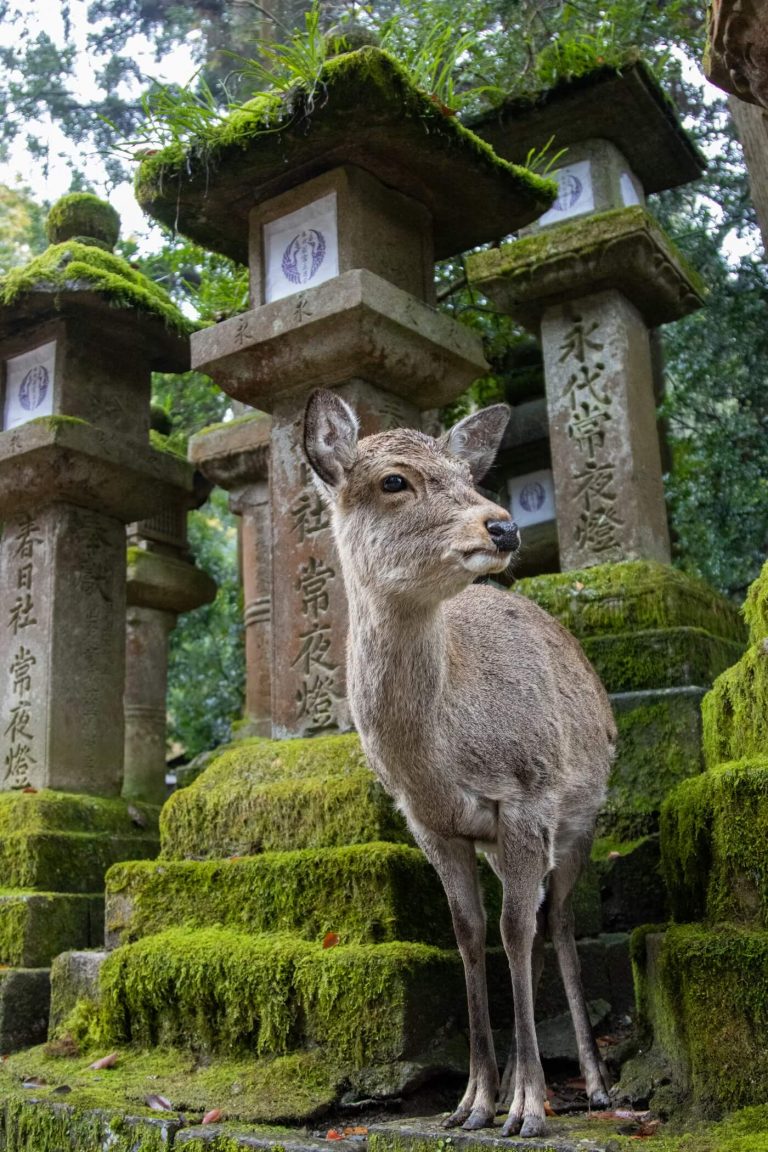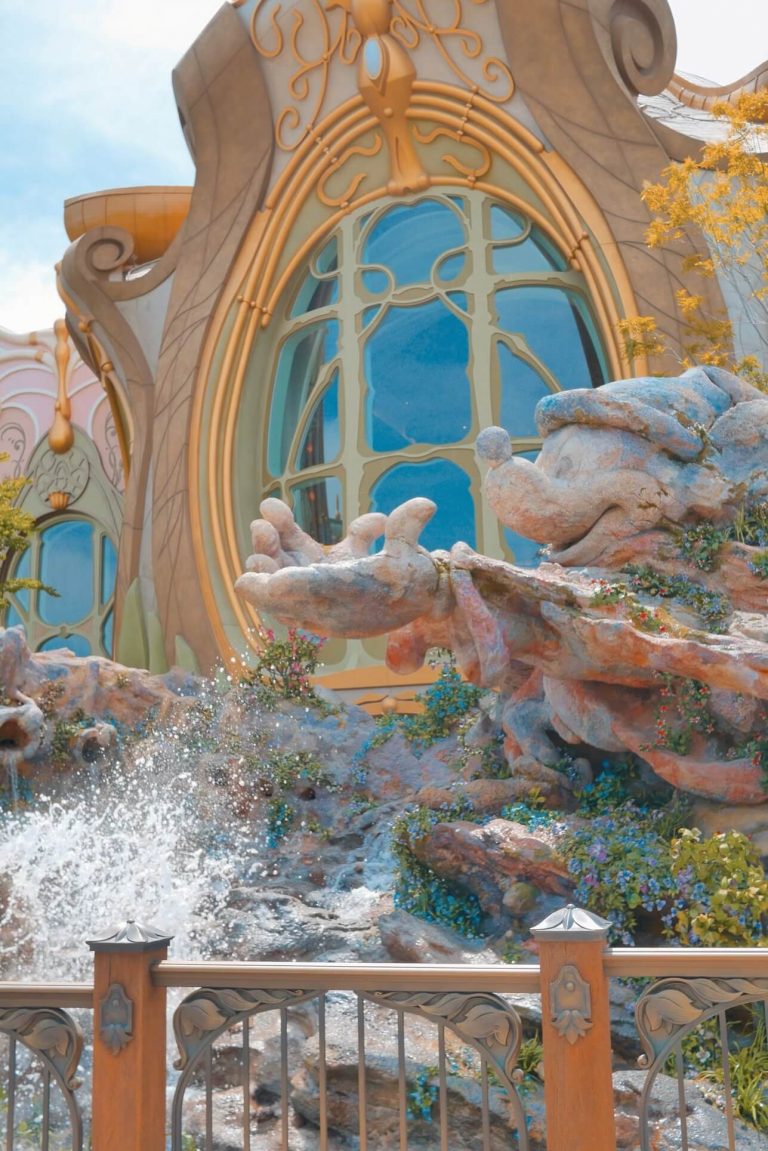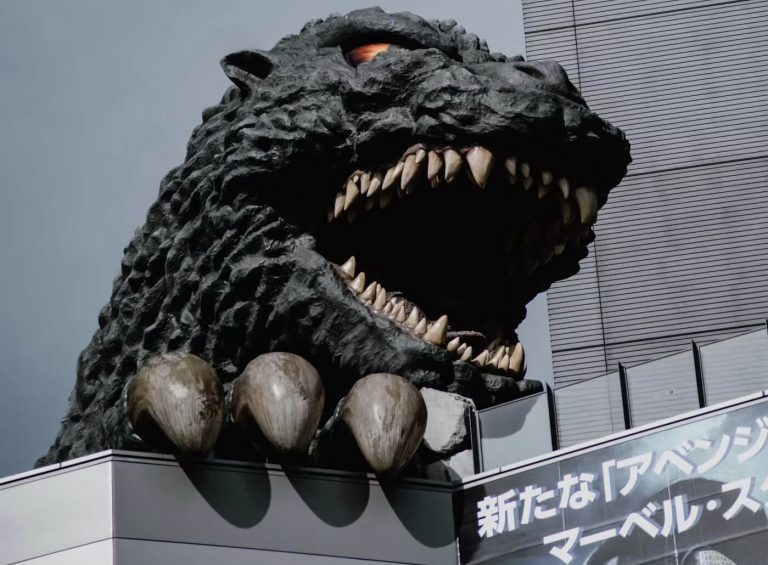Last updated on April 9th, 2024 at 03:48 am
Our Kusatsu Onsen 3-day, 2-night itinerary travel guide promises a blissful escape featuring a picturesque Japanese town nestled amidst the mountains of Gunma Prefecture of Japan. Kusatsu Onsen has earned its reputation as one of the country’s premier hot spring destinations. Renowned for its sulfur-rich baths and the alkaline waters, indulging in a natural hot springs onsen is a must for rejuvenating both the body and mind., Kusatsu has become a magnet for travelers seeking an authentic and tranquil experience. Get ready to indulge in the rejuvenating waters, experience the rich tradition, and craft your ideal Kusatsu Onsen Itinerary for an unforgettable escape.
Kusatsu Onsen Guide
Crafting Your Ideal Kusatsu Onsen Itinerary
Before you begin, make sure to checkout my beginners guide to onsens. To make the most of your trip, consider visiting Kusatsu Onsen Japan during the winter season when the town transforms into a snow-covered wonderland. Picture yourself soaking in a steaming outdoor bath, surrounded by snowflakes gently cascading from the heavens – a true sensory delight.
If you visit Kusatsu Onsen during the winter season, consider exploring the nearby Kusatsu Kokusai Ski Resort. Enjoy skiing, snowboarding, or snowshoeing amidst the breathtaking winter landscape.
How to Get to Kusatsu Onsen
To get to Kusatsu Onsen Itinerary, you have a few transportation options depending on your starting location. Here are the common methods:
From Tokyo:
- By Train: Take the Hokuriku Shinkansen from Tokyo Station to Karuizawa Station (approximately 70 minutes). From there, transfer to the JR Agatsuma Line and ride to Naganohara-Kusatsuguchi Station (approximately 30 minutes). Finally, take a bus from Naganohara-Kusatsuguchi Station to Kusatsu Onsen (approximately 25 minutes).
- By Bus: Direct buses are available from Shinjuku Station in Tokyo to Kusatsu Onsen. The journey takes around 4 to 4.5 hours. Purchase Online
From Kyoto or Osaka:
- By Train: Take the Tokaido Shinkansen to Tokyo Station and follow the same route as mentioned above from Tokyo.
- By Bus: Direct buses are available from Kyoto Station and Osaka Station to Kusatsu Onsen. The travel time is approximately 5 to 6 hours.
Keep in mind that transportation schedules may vary, so it’s advisable to check the latest train and bus timetables online or at the respective stations. Additionally, Kusatsu Onsen can get quite busy during peak seasons, so it’s a good idea to make reservations for accommodation in advance. Enjoy your trip to Kusatsu Onsen Itinerary and have a relaxing time in the hot springs!
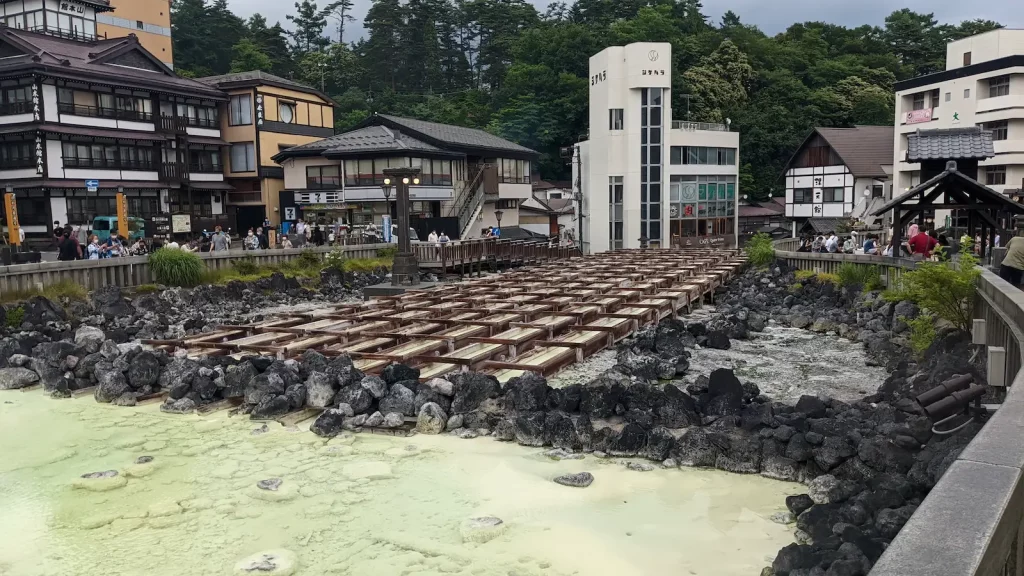
Day 1: Arrival and Welcome to Kusatsu Onsen
Upon arriving in Kusatsu Onsen, you’ll be captivated by the serene ambiance that envelopes the town. The air carries a distinct aroma of sulfur, a testament to the natural geothermal activity that fuels the region’s renowned hot springs. Transitioning from the bustling city life to this peaceful sanctuary is a refreshing experience, as you immerse yourself in the therapeutic properties of the onsens.
- Arrive in Kusatsu Onsen Japan and check into your traditional ryokan or onsen hotel, where warm hospitality and serene surroundings await. We can recommend Kusatsu Onsen Ryokan Eidaya for a ryokan experience or the charming Yubatake Hotel, strategically located near the town’s iconic Yubatake hot spring if you’re looking for a traditional hotel.
- Your adventure begins with Kusatsu’s vibrant Yumomi performance located directly next to the Yubatake, where local women use wooden paddles to cool down the hot spring waters, an age-old tradition that dates back centuries. Six performances per day: 9:30, 10:00, 10:30, 15:30, 16:00 and 16:30 with an Admission fee of 700 JPY.
- Head to one of Kusatsu’s renowned public onsen baths, such as Netsunoyu Bathhouse. Immerse yourself in the mineral-rich healing waters of the onsen, known for their therapeutic properties, and ease away any traces of travel fatigue..
- Enjoy the delicious traditional Kaiseki Japanese dinner at your ryokan, featuring seasonal delights and local specialties. Or find a local restaurant serving traditional seasonal dishes for the perfect dinner.
- In the evening, Take a stroll through the charming streets of Kusatsu, and attend a traditional Japanese taiko drum performance or a local folk dance event, embracing the rich cultural heritage of the region.
- Return to your ryokan or hotel for a late night soak in your private onsen bath to relax and unwind.
Day 2: Morning Relaxation and Cultural Exploration
- Start your day with a traditional Japanese breakfast at your ryokan, savoring seasonal delights and local specialties.
- Greet the new day with an enchanting visit to the Kusatsu Tozan Shrine, a sanctuary surrounded by lush greenery.
- Visit the Kusatsu Nettaiken, an interactive museum where you can learn about the history and geology of Kusatsu’s hot springs.
- Satiate your appetite with a delightful lunch at a local eatery before setting off to Mount Shirane, a majestic volcanic peak offering panoramic vistas of the surrounding landscape. Ascend the summit via cable car and be enthralled by the awe-inspiring turquoise waters of Yugama crater lake, a natural wonder that will leave you spellbound.
- Head back to your ryokan to enjoy another Kaiseki dinner. Searching for local delicacies at a traditional Japanese restaurant.
- As evening falls, treat yourself to a leisurely stroll through the serene Sainokawara Park, where rejuvenating hot spring footbaths await, providing the perfect setting to unwind after a day of travel.
Day 3: Serenity and Farewell
- Embrace tranquility on your final morning in Kusatsu with a visit to the Sai no Kawara Hikaruyo Yurari onsen bathhouse, surrounded by the soothing embrace of nature. Allow the warm waters to envelop you, leaving you revitalized and ready to take on new adventures.
- Enjoy a delightful lunch at a local restaurant, savoring the flavors of regional cuisine. The town is famous for yubatake-manju, steamed buns filled with red bean paste and shaped like hot spring fields. Also, try the traditional onsen tamago, eggs boiled in the hot spring waters, for a unique and delightful treat.
- Before bidding adieu to Kusatsu, cherish a serene moment at Kosenji Temple, a haven of spirituality boasting picturesque gardens and an ambiance of peace. Take a moment to reflect on your enriching journey and cherish the memories you’ve created.
Stay in a Kusatsu Onsen Ryokan
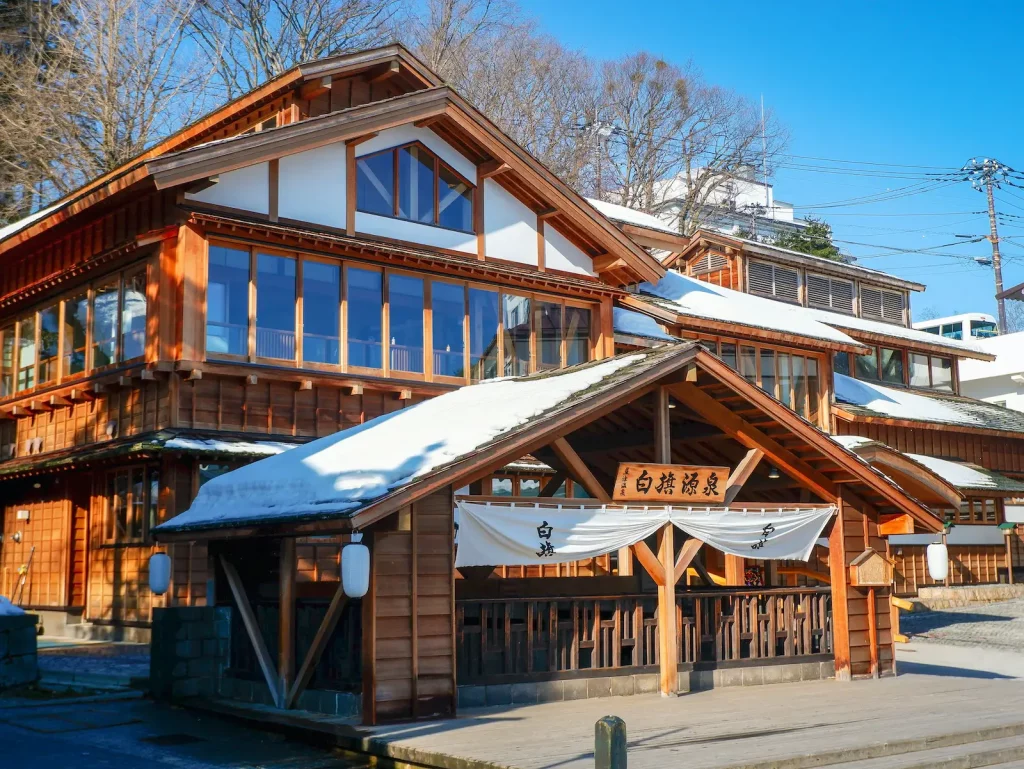
We suggest staying in a kusatsu onsen ryokan, which is a traditional Japanese inn that offers a unique and authentic cultural experience to its guests. These inns are known for their hospitality, traditional architecture, and serene atmosphere. Here are some key features and aspects of a ryokan: Traditional Architecture: Ryokans typically feature traditional Japanese architecture, including tatami-matted rooms, sliding doors (fusuma), and low tables. The rooms often have a minimalist design with a focus on natural materials. Onsen (Hot Springs):
Many ryokans are located in scenic areas with natural hot springs nearby. They often have communal baths (onsen) or private baths where guests can relax and soak in the therapeutic hot spring waters. Kaiseki Cuisine: Ryokans are known for their exquisite kaiseki meals, which are multi-course traditional Japanese dinners. These meals feature seasonal and locally sourced ingredients, beautifully presented in small, artful dishes. Yukata and Geta: Guests are typically provided with yukata (casual cotton kimono) to wear during their stay. Geta, traditional wooden sandals, are also provided for walking around the ryokan.

Kusatsu Onsen Ryokan Eidaya
Kusatsu Onsen Ryokan Tamura
Osakaya Ryokan
Exploring the Best Public Kusatsu Onsens
1. Yubatake: The heart of Kusatsu Onsen, Yubatake is a mesmerizing sight to behold. The grand wooden structures stand tall, showcasing the impressive hot water field where steaming waters gush from the source. Watching the skilled yume-machi (hot water waitresses) diligently cool and distribute the hot spring water in wooden tubs is an enthralling spectacle. Be sure to take a relaxing foot bath by the Yubatake’s edge and savor the soothing warmth while taking in the enchanting views.
2. Sainokawara Park: Embark on a short stroll to Sainokawara Park, a nature lover’s paradise. This public onsen is nestled in a scenic gorge, surrounded by lush greenery and soothing sounds of flowing water. The open-air baths here provide a tranquil environment to unwind while being one with nature. A dip in these mineral-rich waters is believed to offer numerous health benefits, making it an experience you won’t want to miss.
3. Netsunoyu Bathhouse: Visit the Netsunoyu public bathhouse, a historical wooden bathhouse dating back over 200 years. Its architecture and design reflect the rich history of Kusatsu Onsen. Enjoy a soothing bath in the classic wooden tubs and experience a sense of nostalgia.
4. Gozanoyu: Each bath at Gozanoyu Onsen has its unique mineral composition, which is believed to provide various health benefits. The baths range from indoor to outdoor ones, allowing guests to enjoy soaking in the soothing hot waters while surrounded by the picturesque landscapes of Kusatsu.
5: Ohtaki no Yu: One of the most charming onsen facilities. Ohtaki no Yu is celebrated for its rejuvenating and therapeutic baths, where the mineral-rich hot spring waters are renowned for their potential health benefits. From relieving fatigue to promoting skin health, immersing oneself in these revitalizing waters promises a truly indulgent experience.
Conclusion of Kusatsu Onsen Itinerary
Kusatsu Onsen, nestled amidst the captivating Japanese Alps, is a must-visit destination for travelers seeking a unique and rejuvenating escape. It offers an abundance of memorable experiences that cater to both relaxation and cultural immersion. The healing waters of its hot springs and the breathtaking beauty of the surroundings come together to create a haven of tranquility. This carefully crafted Kusatsu Onsen itinerary allows you to immerse yourself in the rich traditions and natural wonders of the region, forging cherished memories that will linger long after your departure. So, embark on this enchanting journey to Kusatsu, where the therapeutic hot springs and serene ambiance transport you to a world of serenity and harmony.
Klook.comAre public onsens in Kusatsu Onsen safe to use?
Yes, public onsens in Kusatsu Onsen adhere to strict safety and hygiene standards. The facilities are regularly maintained, and the water quality is closely monitored to ensure a safe bathing experience.
Can I visit Kusatsu Onsen year-round?
Yes, Kusatsu Onsen is open throughout the year. Each season offers a unique charm, but visiting during winter is especially popular for its enchanting snowscape.
Do I need to bring my towels and toiletries to public onsens?
Most public onsens provide towels for rent, and some even offer toiletries. However, it’s always a good idea to carry your small towel for drying off and personal hygiene items.
Are tattoos allowed in Kusatsu Onsen Japan?
While some onsens have relaxed their rules on tattoos, it’s best to check the specific onsen’s policy beforehand, as some traditional establishments may still have restrictions.
Can children use public onsens in Kusatsu Onsen?
Yes, children are generally allowed in public onsens. However, parents are advised to be mindful of the specific onsen’s age restrictions and guidelines for children’s usage.

